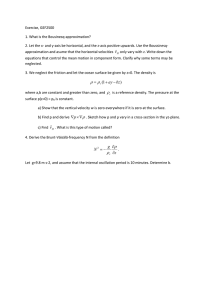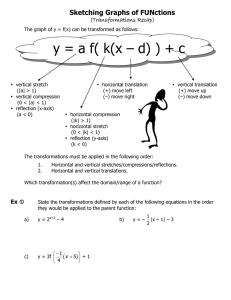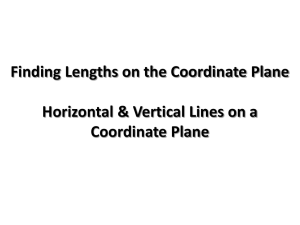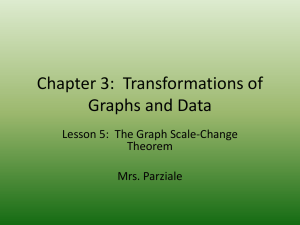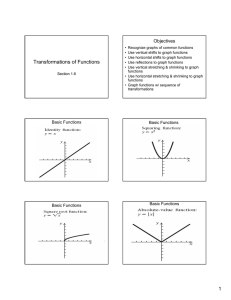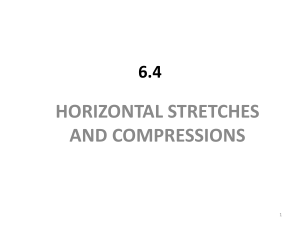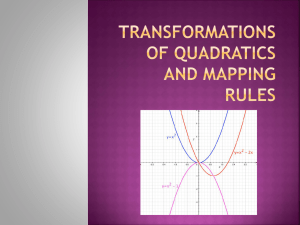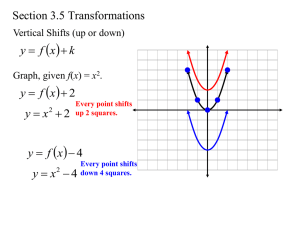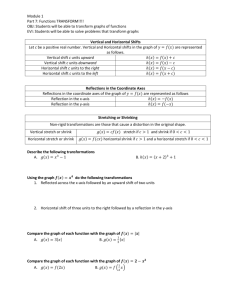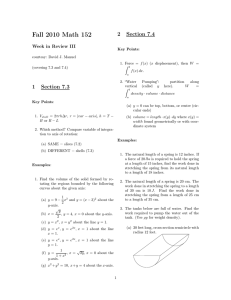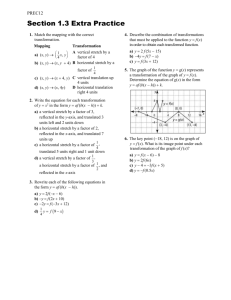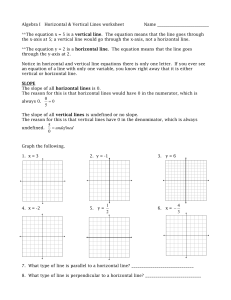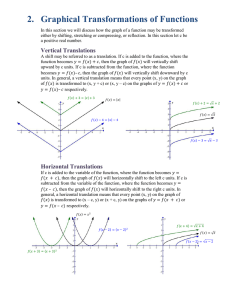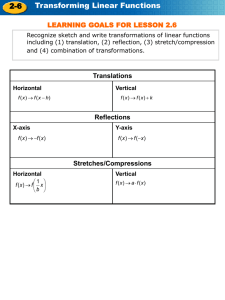Stretches of Functions
advertisement
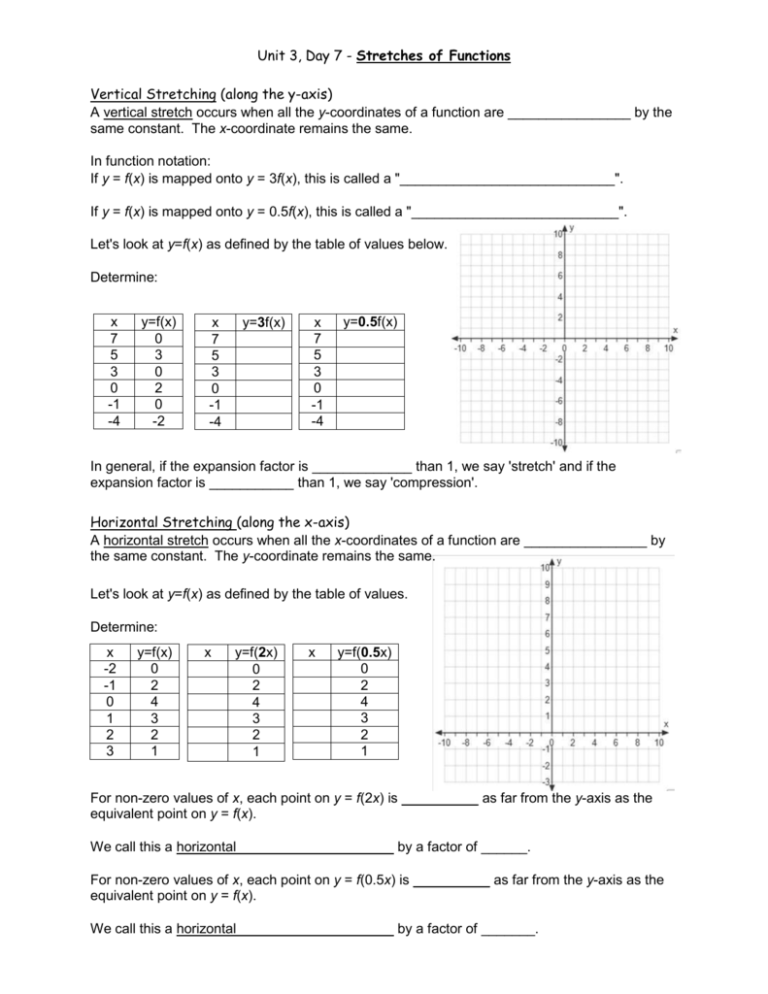
Unit 3, Day 7 - Stretches of Functions Vertical Stretching (along the y-axis) A vertical stretch occurs when all the y-coordinates of a function are ________________ by the same constant. The x-coordinate remains the same. In function notation: If y = f(x) is mapped onto y = 3f(x), this is called a "____________________________". If y = f(x) is mapped onto y = 0.5f(x), this is called a "___________________________". Let's look at y=f(x) as defined by the table of values below. Determine: x 7 5 3 0 -1 -4 y=f(x) 0 3 0 2 0 -2 x 7 5 3 0 -1 -4 y=3f(x) x 7 5 3 0 -1 -4 y=0.5f(x) In general, if the expansion factor is _____________ than 1, we say 'stretch' and if the expansion factor is ___________ than 1, we say 'compression'. Horizontal Stretching (along the x-axis) A horizontal stretch occurs when all the x-coordinates of a function are ________________ by the same constant. The y-coordinate remains the same. Let's look at y=f(x) as defined by the table of values. Determine: x -2 -1 0 1 2 3 y=f(x) 0 2 4 3 2 1 x y=f(2x) 0 2 4 3 2 1 x y=f(0.5x) 0 2 4 3 2 1 For non-zero values of x, each point on y = f(2x) is __________ as far from the y-axis as the equivalent point on y = f(x). We call this a horizontal ____________________ by a factor of ______. For non-zero values of x, each point on y = f(0.5x) is __________ as far from the y-axis as the equivalent point on y = f(x). We call this a horizontal ____________________ by a factor of _______. Combining Horizontal and Vertical Stretching Let's look at y=f(x) as defined by the table of values below. Determine: x 0 2 4 6 8 y=f(x) 0 2 2 4 0 x 0 2 4 6 8 y=3f(x) x y=3f(0.5x) 0 6 6 12 0 Ex. 2) For each function below: a) identify and graph the parent function b) describe the transformations & graph the transformed function c) state the domain and range of the transformed functions d) identify any invariant point(s) i) ii)

